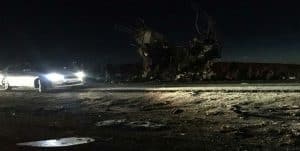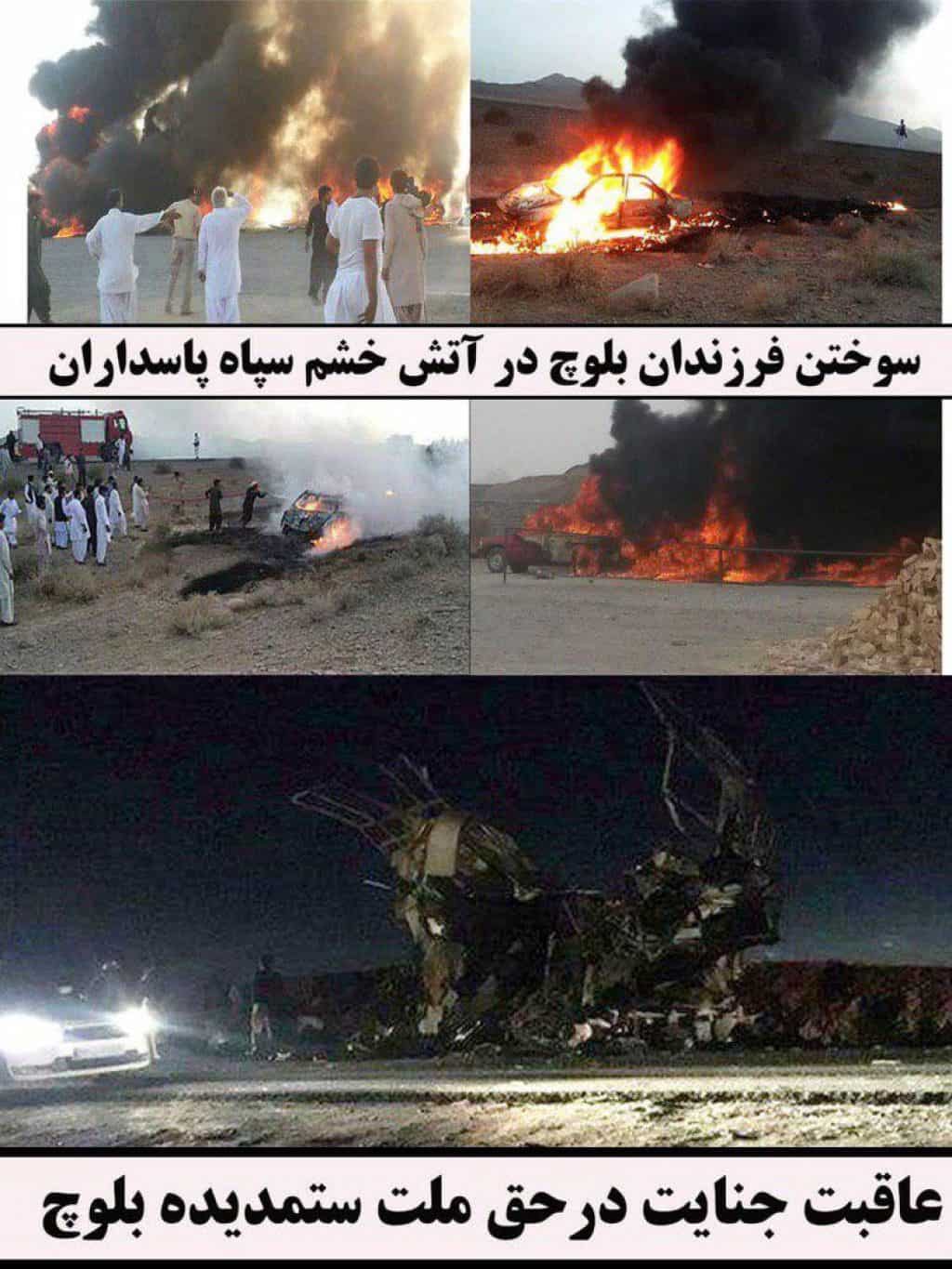
On Feb. 13, Jaish al-Adl (Army of Justice), a Sunni-Baluch group, claimed an attack on a bus carrying Islamic Revolutionary Guard Corps (IRGC) personnel between Khash and Zahedan, in Iran’s southeastern Sistan and Baluchestan province. The bus reportedly carried 40 people, and at least 27 of the passengers have been confirmed killed thus far.
Earlier today, Jaish al-Adl issued a more formal claim of responsibility via its Telegram channel. The group claims to have meticulously planned the operation, so as to maximize the IRGC’s losses. Jaish al-Adl says it “carefully” examined and selected the “target for the operation,” pinpointing a “suitable location” to place its car bomb packed with a high quantity of explosives. The statement’s authors add that the operation was delayed for six months — a claim that is intended to bolster the idea that the bombing was thoroughly planned so as to minimize civilian casualties.
Jaish al-Adl directly “addresses the agents of the oppressive regime of the Velayat-e faqih,” a reference to the jurisprudence underlying the Iranian government, warning them not to serve the “diabolical regime.”
In addition, Jaish al-Adl disseminated several images from the car bombing and its aftermath. That images can be seen at the bottom of this article.
Jaish al-Adl operates along Iran’s border with Pakistan, regularly striking Iranian security forces and then sneaking back into Pakistan.
Initial reports indicated that the explosion was caused by a roadside bomb, but the IRGC Ground Forces Qods Base (which is headquartered in the region) said it involved a suicide vehicle-borne improvised explosive device (SVBIED). The IRGC’s statement blamed “takfiri terrorists” and “agents of intelligence services tied to the Dominant System and Arrogance,” meaning the West, as well as regional adversaries including Saudi Arabia and Israel.
In a statement posted yesterday, Jaish al-Adl rejected the IRGC’s characterization of it being a “takfiri” organization, portraying itself as an opposition group that wants to “liberate [the] oppressed people of Baluchestan and other compatriots” from the clutches of the Iranian regime.
Jaish al-Adl has claimed other operations against Iranian security forces in recent weeks. In late January, the group said its men planted an explosive device near a police station, though authorities claimed it was a home-made grenade. Two other operations in early February purportedly targeted an IRGC base and police forces.
The Iranian government has been fighting insurgents and terrorists in the southeastern corner of the country for years. Prior to Jaish Al-Adl, security forces battled Jundullah, which was established 2003. The US State Department designated Jundullah as a terrorist organization in 2010, noting that it used “a variety of terrorist tactics, including suicide bombings, ambushes, kidnappings and targeted assassinations.” Jundullah’s high-profile attacks included two assaults on mosques in the city of Zahedan. State said that a bombing in Oct. 2009, “which killed more than 40 people,” may have been “the deadliest terrorist attack in Iran since the 1980s.”
Jundullah reportedly disbanded after its leader, Abdul Malik Rigi, was captured in 2010 and later executed. Its surviving members then established Jaish Al-Adl, according to the Associated Press, which added that the group is “believed to be affiliated with Al Qaeda.”
In a 2016 post, Jaish al-Adl emphasized that it continues “the resistance” of Jundullah, and that its members have “endured more than 12 years of fighting.”
Jaish al-Adl posted the graphic below, which includes several images from the aftermath of the IRGC bus bombing:









1 Comment
Yes, the reports are invaluable in our planning when visiting certain areas–thank you.